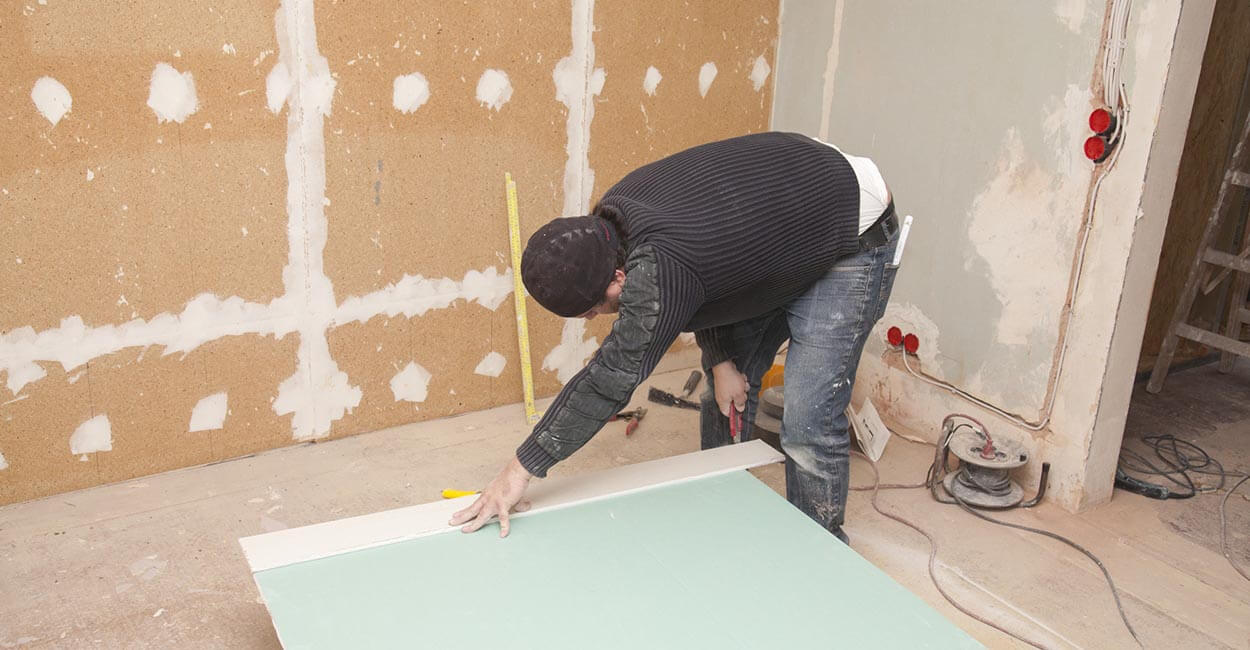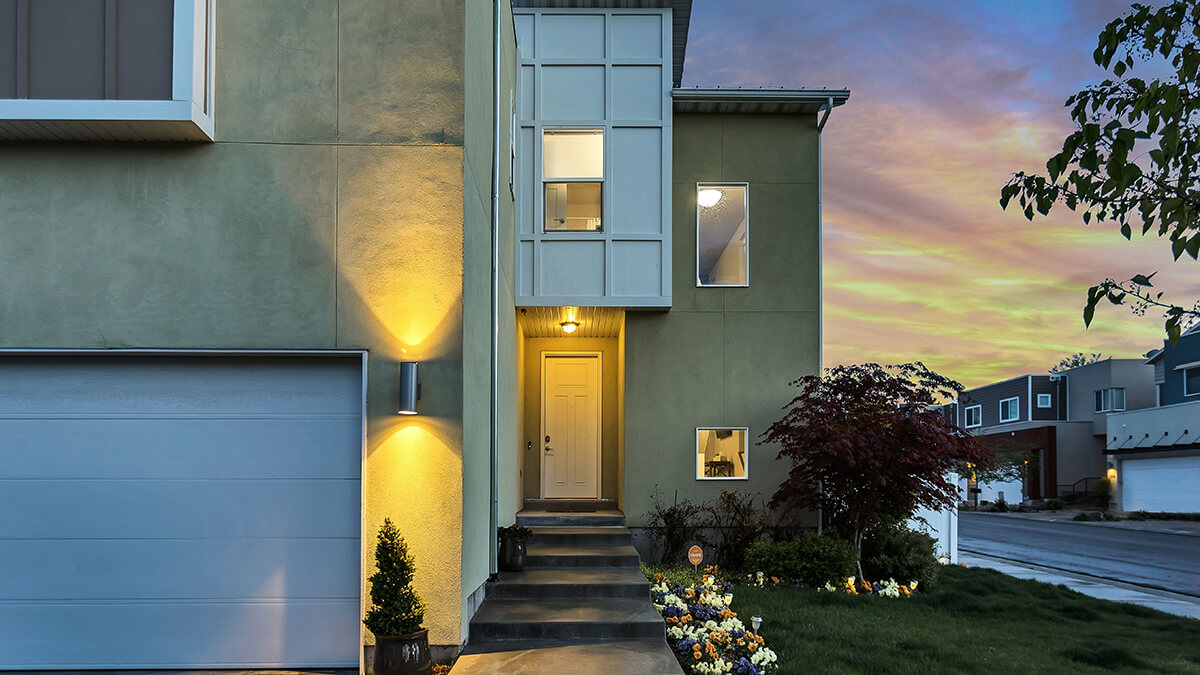House flipping accounts for around 8.4% of home sales in the United States. Though dozens of house flipping TV shows make investing look like a breeze, there’s far more to real estate investing than managing pretty renovations.
To start flipping houses, you’ll need a basic knowledge of how to run a business, a lot of patience, and have a solid understanding of your local real estate market. Take a look at this overview of how to make money flipping houses.
How to start flipping houses
The first step in the house flipping process is finding a property. Target neighborhoods in your local area that allow you to focus your resources and get the best possible leads.
Finding good property deals where you can turn a profit after renovation are usually few and far between. If these opportunities are scattered across a 50-mile radius, your search can easily get overwhelming and costly.
You want to focus on one neighborhood where you can ‘drive for dollars’ or research properties online because you already have an idea of the style of each home. Local amenities become familiar so you’re always aware of the max possible sales price for the neighborhood.
Becoming an expert in one or two neighborhoods also helps you make sound renovation decisions down the road. You won’t waste time installing granite countertops in kitchens where the top-selling property requires only formica.
Here are six factors to consider when defining your target area.
Location
The top consideration when you start flipping houses is location. Yes, you want a highly sought after neighborhood, but you also want the house to be within a reasonable drive of your own home.
While the home is under renovation, you’ll need to visit the property on a regular basis. Homes that are more than 30 minutes away can quickly become a chore to manage.
You’ll shy away from making the drive during rush hour or when the weather is bad. These limitations on managing your renovation can lead to costly mistakes during the construction process.
For your first few flips, you’ll want to watch your renovation team closely until you’ve built adequate trust. This rule might not apply if you’re planning to invest out of town.
But you’ll still want a property you can easily get to by plane or that’s within a day’s drive when it’s time to check up on your team.
Selling Price
Another important consideration to factor in when you start flipping houses is the sales price. The average selling price in the neighborhood tells you how much your investment firm stands to gain from the property flip.
It also tells you how much money you’ll need to have access to in order to do a successful deal. Homes in more expensive neighborhoods do offer an opportunity to make a bigger profit, but it takes more money upfront and a potentially longer sales cycle.
It’s important to stick to moderately priced homes when you first get started. Check the median selling price in your area.
This should be your max sales price in the neighborhood you choose. You’ll find the highest number of potential buyers for homes in this range.
Sales Activity
You’ll find deep discounts on properties in undesirable neighborhoods. But you don’t make money when you buy a property, you make money when you sell your investment property.
Guard against the temptation to buy homes for pennies on the dollar in distressed neighborhoods. The best neighborhoods to pursue when you start flipping houses are those with consistent sales activity.
Keep in mind that these neighborhoods don’t have to have to be the most desirable areas in the city. In fact, a neighborhood that’s only recently on the rise can present a lot of opportunities since it’s not already saturated by other house flippers.
Look for neighborhoods in solid school districts with moderate growth. Avoid trendy areas.
Age
The next factor to consider when you start flipping houses is the age of the property. Renovations on older homes can make or break an investment deal.
Homes that are too old might require renovations that are too expensive to consider. With these homes, you’ll spend more than the home is worth just getting it into a livable condition.
But homes that are older also mean stable property values and high owner equity. Homeowners that own their homes outright have more wiggle room during the negotiation process.
They can offer you a deal on the home and still walk away with a big profit. Newer homes usually require fewer renovations, but the owners won’t have the equity to accept a low offer.
Aim for the 20-year mark when looking for potential properties to buy. Historic homes are beautiful, but having to bring the entire electrical and plumbing system up to code in an older home is too much to manage when first starting out.
Appeal
Local amenities aren’t something you can control throughout the life of a property. Shopping centers and local schools might close or relocate.
The only factor you can consider is what amenities are nearby today. Choose areas that have solid retail, office, and leisure options nearby.
Avoid investing in areas where there’s only a promise of growth but no activity. You want an established set of amenities that’ll continue to attract buyers for years to come.
Safety
There are two main reasons to look for safe neighborhoods when you start flipping houses. The first reason is to ensure the personal safety of your renovation team.
You don’t want to risk break-ins or equipment theft while your team is trying to upgrade the home. This is demoralizing for the crew and might mean losing out on good contractors.
Avoid investing in neighborhoods where you won’t feel safe visiting the home during odd hours of the day. When driving through a potential target neighborhood, ask yourself whether you’d feel safe being in the home alone at night before lights are installed.
What about leaving equipment inside the home before locks are installed on each door? These questions help you evaluate whether a property is worth the risk.
If you can’t trust the neighborhood before there are furniture and valuables inside, chances are potential buyers won’t trust the neighborhood either.
Evaluate each property deal
Now that you’ve narrowed down your target neighborhood, it’s time to evaluate each property deal. The evaluation process can range from hours to days depending on the amount of competition in your local market.
In hot markets, you need a firm understanding of how to evaluate a property deal quickly so you don’t miss potential opportunities. Here are several important areas you’ll need to analyze when considering whether to buy a property.
- Square footage
- Property taxes
- Year built
- Sales prices
- Days on Market
- Features
- Amenities
- Neighborhood Schools
As you become an expert in your target neighborhood, these questions become easier to answer. Things like square footage and features vary from property to property.
The total square footage is important to note because it translates to higher renovation costs. More square footage means more money needed for materials and labor hours.
The Days on Market (DOM) for an area helps you plan for the flipping process. Not every home in your target neighborhood will have the same DOM.
Homes with highly sought after features might sell twice as quickly as those without. For example, families might gravitate toward a three-bedroom home at a median price range.
A home with four or more bedrooms at a higher price point could sit on the market for twice as long. Consider the profile of the target buyer when evaluating a property deal.
You want to account for the profit potential when selling and the length of time it’ll take to sell the property. The DOM for your target neighborhood is based on how many buyers can qualify for the home you’re selling.
Finding financing
When you start flipping houses, you need a clear exit strategy for each property deal. This exit strategy is how you narrow down where to get financing.
For example, on high-risk flips, you might not want to risk ruining a relationship or getting charged high-interest rates with hard money loans. Consider your worst-case scenario on a house flip.
Use this worst-case scenario to determine the best way to structure financing. Perhaps you might enlist the help of an experienced investor partner on riskier flipping opportunities. This is someone who can split the cost of the property while offering advice along the way.
Other investment ventures might call for pursuing conventional financing because of low-interest rates. No matter the type of financing you pursue for your deal, you want to have a strong financial profile before getting started.
Both individual investors and traditional lenders want to see that you have cash on hand and collateral before getting started. For lenders, good credit is essential, too.
Collateral usually comes in the form of the property deal itself. Lenders want to make sure the property is worthwhile after renovations. Make sure you’ve thoroughly researched sales activity in your target neighborhood before you start flipping houses so you can see the area from the lender’s perspective.
The lender’s main goal is to make money on the loan at the lowest possible risk. The best way for the lender to do this is to make sure the home appraises for more than the total cost of your property after repairs.
This amount is called the After Repair Value (ARV). The ARV gives you an idea of how much you should offer on a property in order to make your target profit.
Remember to be very conservative in your estimate. When you first start flipping houses, surprises will come up.
Overestimating your profit or the ARV is the easiest way to lose money on your property deal.
Miscalculating improvement costs
Renovating is the most glamorous step in the house flipping process. But when learning how to flip a house, you have to be careful about being too optimistic.
Overestimating a selling price based on your renovation ideas can lead to buying a property that you should’ve skipped. Renovation costs aren’t easy to estimate as a beginner.
Some properties will only need a fresh coat of paint and new carpeting in order to sell for top dollar. Others need new bathroom and kitchen fixtures in order to meet the bare minimum of building code requirements.
When you’re evaluating a home to buy, you’ll need to also estimate renovation costs in your head. There’s no substitute for experience when it comes to this step.
Take your time combing through information about the property to decide what you should offer on the home. The amount you offer is what gives you access to the money you’ll need to renovate and is your biggest opportunity to create value.
Offering too much to win the property deal leaves you with little wiggle room to pull out cash for renovations and still profit in the end. It’s much better to walk away and wait for a better opportunity than to underestimate renovation costs on a home because you’re rushing to get in the game.
So, how can you get accurate numbers on the renovation if you’ve never done it before? One way is to talk to professionals.
General contractors are experts in the renovation process. Ask one for a consultation on the home you want to buy.
Meet with the contractor on the property site to learn what areas need cosmetic help and which need a full renovation. Be sure to get more than one opinion so you can compare the information.
Will I make money when I start flipping houses?
Flipping houses is an investment. As with any investment, when you start flipping houses you are taking a risk that could lead to major profits or loss.
There’s no guarantee that any investment deal will go well, but with house flipping your chances for success goes up with every property deal you complete. Avoid allowing emotion to flood your judgment when evaluating a deal or deciding on a purchase offer.




